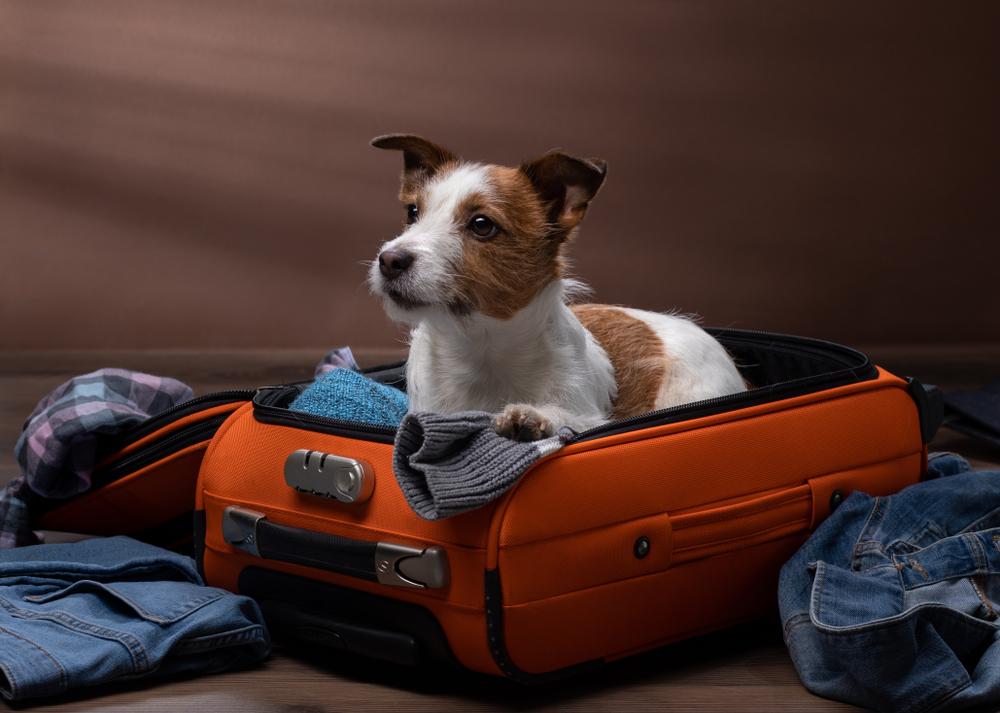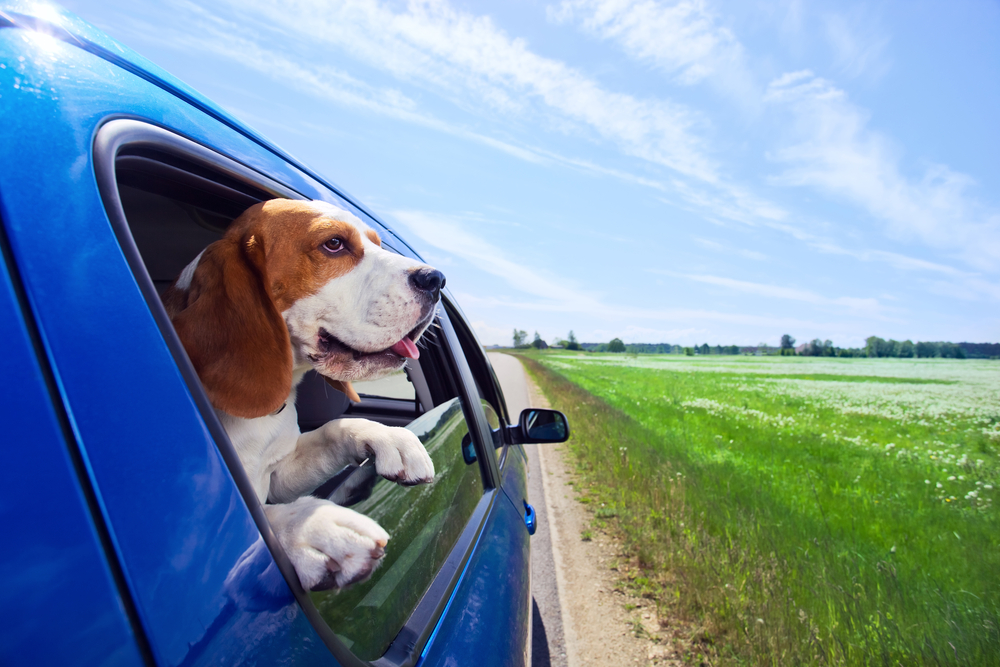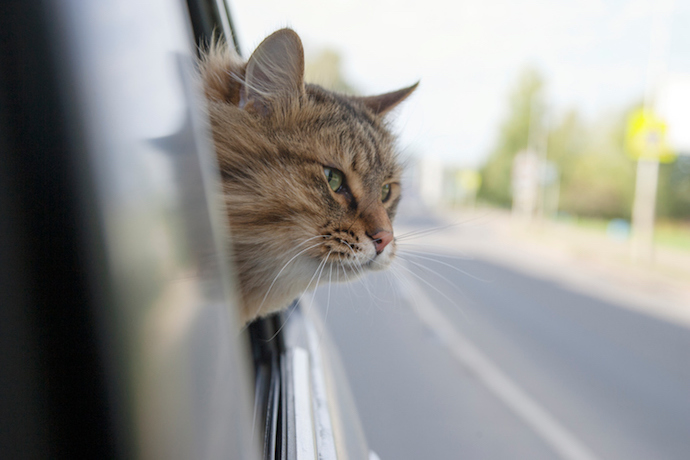Moving can be highly stressful on dogs and cats, as well as other pets. As an important member of your family, you’ll want to do all you can to ensure your little buddy has the smoothest transition possible. That requires some additional planning on your part to keep all of your furry friends safe and happy all throughout your relocation journey.
Preparing to Move With Your Pet

As their caretaker, your pets depend on you to ensure their wellbeing and comfort during the moving process. Before your move, you’ll need to develop a plan. Here are some key considerations:
Maintain Consistency
If you’ve moved before, you know how hectic things can get before the actual moving day. As chaotic as things may feel, it’s important that you maintain a familiar and consistent schedule with your pet leading up to the big transition. Keep up with your regular walks and feeding times, and treat all other routines like business as usual. The less stress your pet has before leaving their familiar surroundings, the better.
Get a Plan in Place
Don’t leave the “day of” pet plan for the last minute. Arrange for a caregiver to spend the day with your pet while you worry about boxes, trucks, and GPS coordinates. They won’t have to deal with the stress of all that’s happening, and you won’t have to worry about tending to them or tripping over their toys. If that isn’t possible, prepare a dedicated room for them on both ends of your move where they can
Visit the Vet
Visit the veterinarian one last time to ensure all shots are updated, and prescriptions are filled and transferred to your pet’s new vet. Don’t have one yet? Better add that to your to-do list.
Check Local Regulations
Whether you are crossing state lines or moving to the next jurisdiction over, be prepared. Localities have varying rules concerning vaccinations and licensing. If you’re moving with a pet, you must be aware of and ready for new rules.
Last In, First Out
One of the best things you can do for your pet before leaving your old home is to pack their toys, bedding and feeding bowls last. And when you’re unpacking in your new digs, be sure to set up their things first. These simple gestures will make things much easier before and after the move.
Plan Your In-Between Accommodations
Not spending moving day in your new home? No problem. But it might be if you’re not prepared. If you’re spending a night or two somewhere other than your new abode, plan ahead. Staying with friends? Make sure no one in the home has pet allergies. Staying in a hotel or Airbnb? Make sure they’re pet friendly.
Moving Long Distance with Pets

When the big day (finally!) arrives, you’ll want it to be easy-peasy for your pet, so keep the following tips in mind when:
Traveling by Car
A road trip with your pets can be an fun and exciting adventure, or a disaster if you aren’t prepared. Here some tips for success:
- Pack a small bag just for them. Ensure you have all their food, water, medications, leashes and comfort objects all in one place.
- Plan to stop every two to three hours when traveling with dogs. Identify rest areas, parks, and other suitable areas in advance.
- Consider a crate/carrier for cats and smaller dogs. Start training your pet to sit inside a crate a few weeks before moving.
Traveling by Air
If you’re traveling with your pet by air, there are several things to consider; however, these are the most essential:
- Is your pet anxious, aggressive, elderly, pregnant, or ill? If so, flying may not be the best choice for them.
- Different airlines have different rules regarding in-cabin accommodations. You may have to stow your pet in cargo. Cargo pet travel availability is subject to safe weather conditions.
- You will need a vet-approved health certificate before boarding with any airline, so have one ready to go at least two weeks ahead of time.
- Eight weeks is the minimum age for pets to fly.
- Each state has different requirements upon landing. You may have to put your pet into quarantine after a flight. Do your homework to avoid any unhappy surprises.
- Think about purchasing a potty aid for your pet, especially for longer flights.
If you’re uncomfortable or unable to take your pet on an airplane with you, you could hire a pet transportation company to pick up and transport your pet to your new home.
Settling In To Your New Home With Your Pet

The physical move with animals can be tricky, and so can the settling-in phase. Luckily certain things will make things easier for you and your newly uprooted pet.
Check the Overall Safety
Are your new home and yard safe for animals? If not, address whatever issues need to be dealt with ASAP. For example:
- Make sure your pet can’t escape from the yard.
- Check that all windows, screens, and doors are secure.
- If you have a balcony, keep your pet on a leash or put up a safety barrier.
- Inspect the property for traps, pesticides, poisons and other dangers such as small objects that a pet might ingest. Keep all chemicals safely stored.
Introduce Them to the New Home and Neighborhood
You know your pet better than anyone. Are they super skittish? Consider introducing them to their new home one room at a time. If they go for walks, keep them short and take the same route for a while. If possible, give your pet their own special place in your new home, complete with all their favorite things.
Stick to a Routine
One of the best things you can do once you’ve introduced your pet to its new home is to stick to a routine. Whatever you did in your previous home regarding feeding, exercising, playing, etc., keep it as similar as possible.
Safe Travels!
Yes, moving with a pet can be challenging, but using these tips will help make things a little smoother for you and your animal. Remember, the less chaos there is, the quicker your pet will adapt to its new surroundings. Before you know it, your new home will be your pet’s new favorite place.





